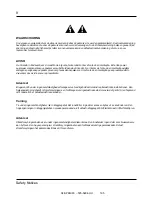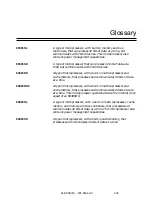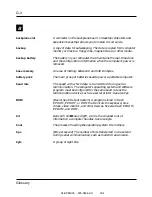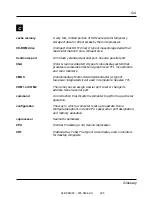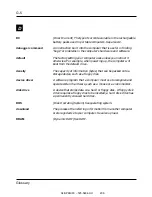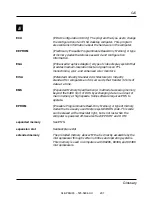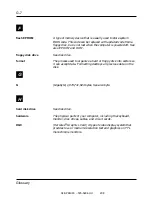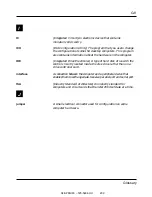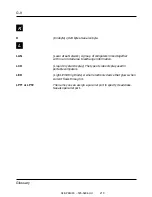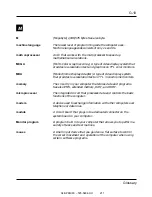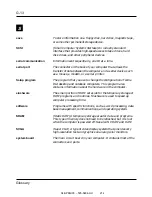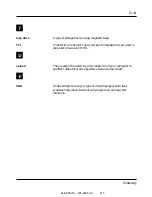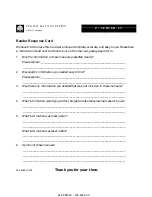
R
RAM
(Random-Access Memory) A temporary storage area for data and
programs. This type of memory must be periodically refreshed to
maintain valid data, and is lost when the computer is powered
off. See also NVRAM and SRAM.
real-time clock
The IC in your computer that maintains the time and date.
RGB or RGBI
(Red, Green, Blue, Intensity) Separate video signals used to
produce different colors on color monitors and different shades of
one color on monochrome monitors. The addition of the intensity
signal allows twice as many colors or shades to be displayed.
ROM
(Read-Only Memory) A type of memory device that usually is
used to store system BIOS code. This code cannot be altered and
is not lost when the computer is powered off. See also BIOS,
EPROM, and flash EPROM.
RS-232C port
An industry standard serial port. See also serial port.
04/APRIL/93 – 595-5484-UU
213
G-12
Glossary


